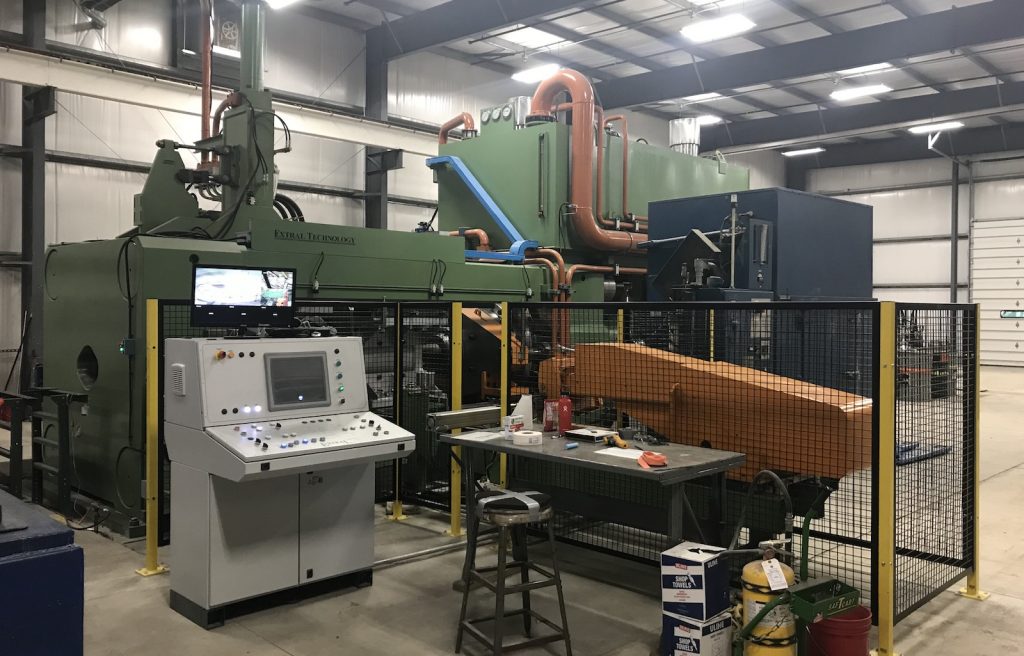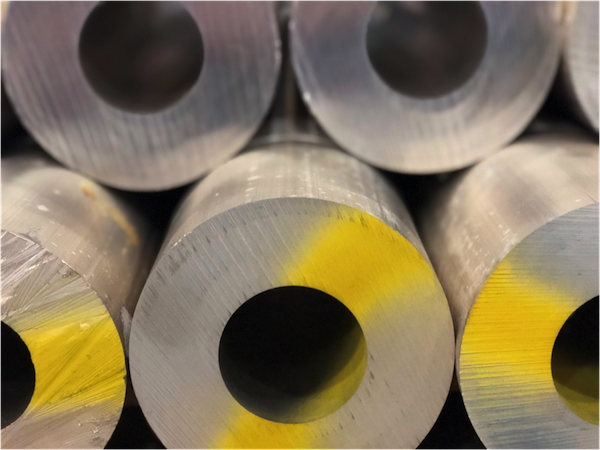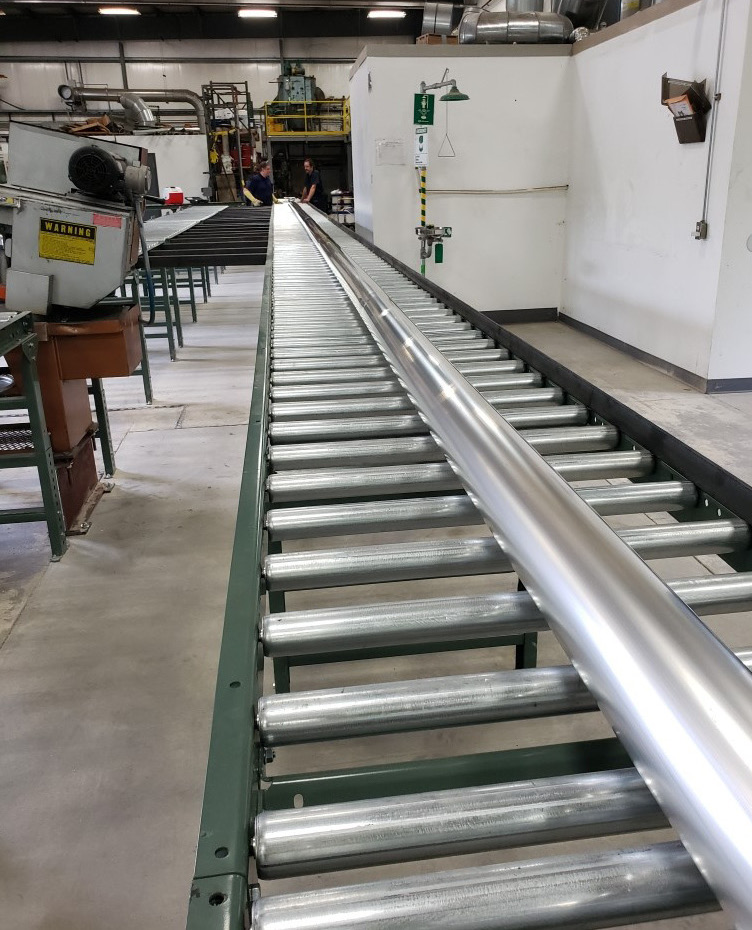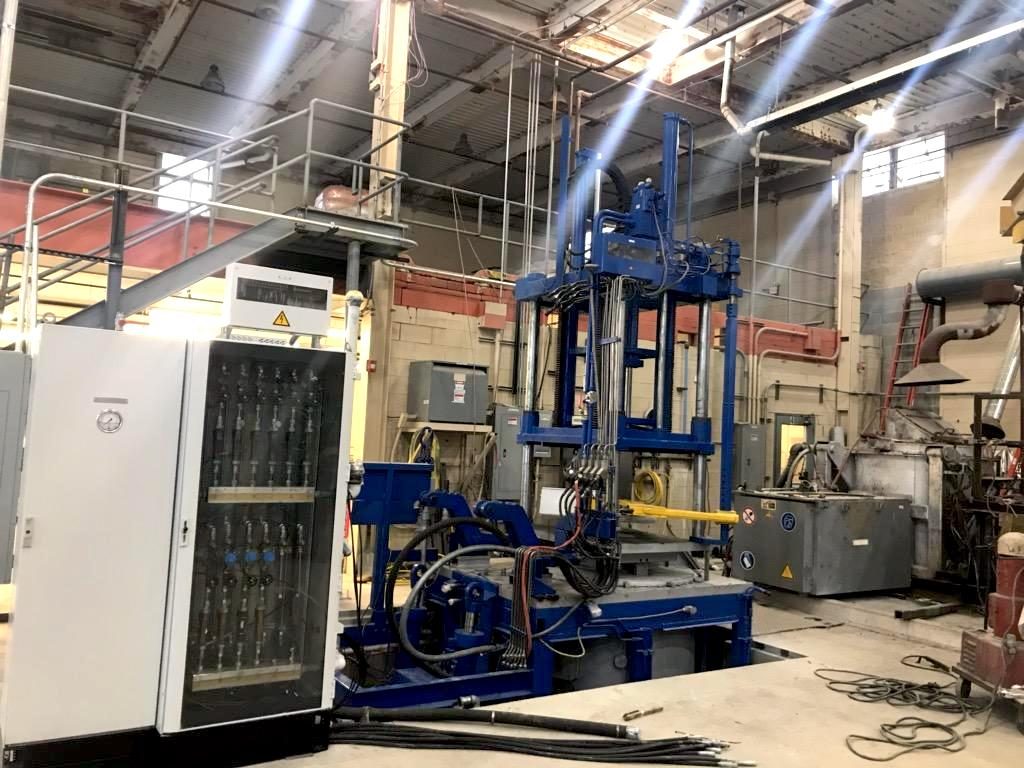Terves Inc. in Euclid, OH, is a developer and manufacturer of engineered magnesium alloys. The company recently completed the installation of a state-of-the-art 3,500 MT extrusion press (Figure 1). Housed within the company’s new 11,000 sq ft magnesium metal processing facility, the press secures Terves’ supply of wrought dissolvable magnesium alloys, as well as further expanding the company’s magnesium molten metal processing, heat treatment, machining, and storage capabilities.

Company Profile
Terves Inc. was founded in 2013, when owner Powdermet Inc. moved to commercialize the multifunctional and reactive materials technology that it had developed over 20 years for aerospace and defense applications. Terves successfully launched its proprietary TervAlloy dissolvable metal and tubulars a year later. Initially, the company focused on the development of intellectual property, conducting R&D at its operations, while outsourcing production. In 2016, Terves brought production capabilities in-house with the installation of a magnesium foundry and CNC machining services.
Terves currently sits on 15 acres at the former TRW Aerospace R&D facility, where it operates out of five buildings with over 75,000 sq ft of production, laboratory, and office space. The extrusion operations include two presses, a 650 ton R&D press and the recently installed 3,850 MT press. The company also operates six furnaces in its permanent mold magnesium foundry, including production-scale furnaces such as a 500 lb electric Striko Dynarad furnace and two 1,500 lb Habenery gas-fired furnaces. Terves produces magnesium billet for its extrusion operations via permanent mold gravity and low pressure vacuum casting. The foundry is able to produce 500 tpy of finished product. In addition, the company has extensive machining capabilities, which were expanded in 2019 to include fourteen 3-5 axis CNC machines dedicated to magnesium.
The company’s internal research and development area includes lab scale melting (1 lb, 10 lb, and 60 lb crucibles), chemical analysis (Perk & Elmer ICP, Spectromaxx OES), muffle furnaces for heat treating, light microscopy, and other capabilities.
Dissolvable Magnesium Alloys
Terves is a developer of engineered magnesium alloys, primarily producing wrought dissolvable alloys for the oil and gas market in North America, South America, Europe, and Asia. Dissolvable alloys are essentially materials that have been formulated to provide high corrosion rates in a controlled manner. The company’s first success in this area was the development of the TervAlloy series, which was initially designed for the U.S. Department of Defense. These alloys have since been reconfigured and customized into specifically designed reactive materials used for making frac balls, plugs, slips, seals, and several other components used in oil and gas well construction.
The TervAlloy series represents a wide variety of dissolvable alloys, including brine, fresh water, and acid dissolvable; low, medium, and high temperature; medium and high ductility; coated and uncoated for delayed or triggered dissolution; high hardness dissolvable metal matrix composites (hardness of up to 50 Rockwell C); and dissolvable elastomers. These wrought dissolvable magnesium alloys (Figure 2) improve the efficiency and safety of completing oil and gas wells, replacing the need to drill out aluminum or other tooling in isolating zones that are used to achieve high oil and gas yields from shale and other tight formations.

“At the time we launched our first product, we enabled a well operator to save over $4,000 per stage in costs for drilling out aluminum and composite frac balls to restore wellbore communication,” said Andrew Sherman, CEO and founder of Terves. “The introduction of dissolvable, intervention-less frac plugs made of magnesium now enables longer laterals to be reliably produced, increasing well production by 20% or more.” The company’s dissolvable metals have been used for over 100,000 well completion stages in the U.S.
Through its R&D capabilities and expertise in alloy development, the company plans to continue working on new alloys to meet a variety of customer requirements. With this in mind, Terves expects to make significant inroads in the aerospace, defense, and medical equipment markets in 2020.
New Extrusion Press
Terves made the decision to install a production-scale extrusion press in 2018, after a supply interruption placed the business at risk. “Basically, we had the choice of outsourcing all production to China or investing in a large enough press in the U.S. It was a tough decision, but we believe in U.S. manufacturing,” said Sherman. “While a very large investment, we knew our core oil and gas markets would allow us to break even on the investment even at a small fraction of capacity. The press would also secure economies of scale and enable growth and expansion into additional wrought magnesium markets, such as lightweighting, which were cost-prohibitive without our own, larger facility.”
After carefully considering a number of presses and press manufacturers, the company selected Extral Technology SRL in Italy to supply the new press. “We sent out tenders to most of the major press manufacturers and visited suppliers in China and other countries,” said Sherman. “Extral stood out, meeting our needs for an extremely rigid press and offering the shortest lead time. They are a big innovator for short stroke presses, and they have support staff and machines installed locally, so we felt very comfortable.”
Setting up the new 11,000 sq ft magnesium processing facility, in which the press is housed, was its own challenge, since obtaining permits for new magnesium operations is a long process. The facility had to be upgraded to H3 (high hazard) status in order to comply with new building codes. It also required special engineering of the foundation to support the press, and the installation of 3 MW of power on an adjacent lot in order to run it.
“We are lucky to have had access to power and to be located in a community with a very strong metals and manufacturing background,” said Sherman. “We have received a lot of support from the city, the county, and the local manufacturing assistance center, which has enabled our expansions over the last few years.”
Completion of the facility and press installation involved the cooperation of several entities. Liberty Concrete performed the foundation work, leveling 10 ton support plates to within 0.10 of an inch. R.L. Best Company provided rigging and installation services, maneuvering 38 ton components into position with precision, as well as providing support, spares, and training on an ongoing basis as needed. Dunaway Inc. assisted in getting the press and ovens properly aligned and supplied the die ovens and other auxiliary equipment. Turnkey Sales LLC provided invaluable support in managing the installation and start-up of the press. “We were truly lucky to have all this amazing support available here in northern Ohio,” said Sherman, “We are especially grateful to Tom Nentwick at ExtrusionSupplies, who helped us identify Extral and who also handled much of the logistics of the press fabrication and delivery.”
The 3,500 MT short stroke press was specifically designed to be highly rigid in order to allow for the production of TervAlloy and other difficult to process materials. The large tonnage and high rigidity of the press are necessary because of the high forces needed to extrude magnesium and other materials that the company manufactures. The press is configured to process 9 inch billet up to 48 inches in length (depending on the alloy), with a typical billet length of 28-36 inches. It requires 1,500 amps to operate, with five main pumps and two auxiliary pumps.
Due to the extremely high friction and breakout forces required, magnesium extrusion typically extrudes at very low rates, often 10-15 times slower than aluminum. However, the press installed at Terves is capable of extruding over 20 million lbs of magnesium extrusions per year.
Prior generation proportional-style controls are not suitable for magnesium extrusion. Due to the low push rate and high friction, adequate cooling and a variable speed precision pump control is required in order to minimize energy costs and prevent overheating. It is important to control the extrusion speed at a variation of 0.1 inches per minute or less, as some alloys extrude at rates as low as 0.5 inches per minute.
Automated billet feeding, a die loader, and a butt shear were installed at the front of the press, with a 25 m runout table (Figure 3), cooling table, and cutting table to handle the profiles after extrusion. Due to the lower productivity of magnesium, fully automated handling, as typically seen in aluminum facilities, is not required. Therefore, a number of manual operations are implemented for handling the profiles. In the cutting, billet shearing, and billet heating operations, special handling and safety procedures were implemented in order to safely process the swarf that is generated.

Die designs for magnesium extrusion differ from aluminum designs, particularly in terms of the bearing design, die stiffness, and robustness—because of the high frictional forces and different flow characteristics of magnesium. Terves utilizes a very large bolster and backer and implements an extremely rigid design in order to prevent die failure.
Ongoing Expansion and Development
Terves was the seventh fastest growing company in northern Ohio from 2014 to 2018, and the second fastest growing manufacturer—and that progress doesn’t seem to be slowing. In addition to the new extrusion press, the company is actively investing in other projects to expand its capabilities and product offerings.
The company is currently nearing completion on the construction of a 12,000 sq ft addition to its foundry, located on an adjacent property. This will enable increased output and handling and will support the company’s die and squeeze casting operations. A refurbished Kurtz low pressure die cast (LPDC) machine was installed in early 2020 (Figure 4). In addition, the company has ordered a 100 ton vertical squeeze press for complex-geometry parts made from magnesium metal matrix composites (MMCs).

Terves is also continuing research and development on magnesium alloys. One area of interest is magnesium battery technology, which has the potential to provide 5-10 times the volumetric energy density as lithium batteries at a fraction of the cost and environmental impact. “We are working on new alloys that reduce the strength and toughness/ductility differential with aluminum, while extruding at much faster rates,” said Sherman. “Terves, along with our parent company Powdermet Inc., invests heavily in R&D and commercializing novel solutions that overcome limitations in order to open up new markets or market share for magnesium and other advanced materials, such as MMC.”
Conclusion
Terves is now the only vertically integrated wrought magnesium producer in the U.S. The new extrusion press will enable the company to support its ongoing operations in the oil and gas market by reducing production costs and securing control over the entire production process.
The press also allows the company to take on additional magnesium and MMC development challenges and delve into new markets. The company is actively exploring expansion opportunities to address lightweighting needs in the automotive/transportation, aviation/aerospace, and mobility/handling industries. To this end, Terves has budgeted for the installation of a stretcher and for additional container sizes and billet molds in 2020.
“With magnesium being one-third lighter than aluminum, considerably less expensive and easier to design with than carbon fiber composites, and stiffer than plastics, we believe it will be a key material choice,” said Sherman. “We have formed a lot of partnerships with organizations, such as LIFT Technology, Case Western Reserve University, and Ohio State University, to advance magnesium and light metal technology. We look forward to playing a part in a resurgence of North American light metals activity.”
Editor’s Note: This article first appeared in the February 2020 issue of Light Metal Age. To receive the current issue, please subscribe.
